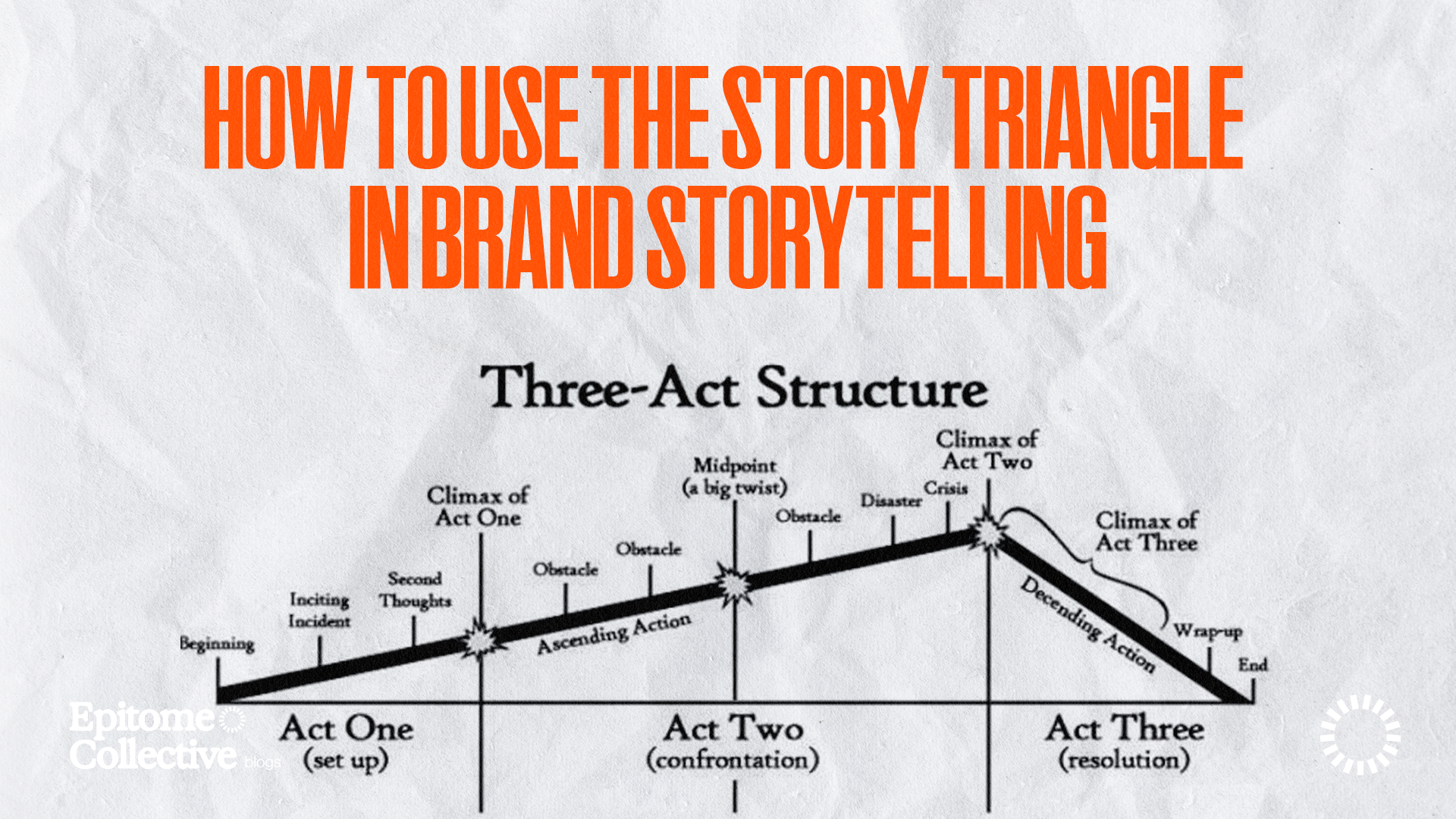How to Use the Story Triangle in Brand Storytelling

How to Make Your Video Marketing Actually Move People
You've written the brief. You've approved the budget. You hit record. But when you watch the final video back, something feels... off. It looks professional. The message is clear. But it doesn't land.
If you've ever wondered why some brand videos make you feel something while others just pass by, you're asking the right question.
The answer isn't better cameras or bigger budgets. It's about understanding what makes a story connect emotionally and having a simple way to build that into your video from the start.
That's what the Story Triangle does. And if you're exploring video marketing for your brand, this framework will save you from making expensive content that nobody remembers.
What Is the Story Triangle?

Think of the Story Triangle as a checklist that stops you from creating hollow videos. It's three questions that align what your brand stands for, what your audience is feeling, and what emotion you want them to walk away with.
Here's what each piece means:
Brand Belief
What does your brand actually believe in? Not what you sell. What you stand for.
For example:
- Nike doesn't sell shoes. They believe everyone is an athlete.
- Dove doesn't sell soap. They believe real beauty comes in all forms.
- Apple doesn't sell phones. They believe technology should be simple and human.
This is your "why." The thing that makes people care about you beyond your product.
Audience Truth
What is your audience actually experiencing right now?
This isn't about age or income. It's about the real, messy feelings they're dealing with:
- New parents feeling overwhelmed by conflicting advice
- Small business owners terrified of wasting their marketing budget
- Remote workers feeling disconnected and invisible
Get this wrong, and your video will feel like it's talking at people instead of to them.
Emotional Goal
How do you want your audience to feel after watching your video?
Do you want them to feel:
- Understood?
- Hopeful?
- Empowered?
- Relieved?
- Inspired?
Pick ONE. This is the emotional destination your video needs to reach.
Why This Matters (Especially for Video)
Here's the truth: people don't remember information. They remember how you made them feel.
Video is the most powerful storytelling tool you have. But most brands waste it by using video like a PowerPoint presentation. Just delivering facts with moving pictures.
When you skip the emotional work, you get:
- Videos that look great but don't get shared
- Content that informs but doesn't persuade
- Campaigns that disappear the moment they launch
The Story Triangle fixes this. It forces you to start with emotion before you pick up a camera.
The ABE Model: Your Simple Planning Tool
To use the Story Triangle, we've simplified it into three prompts you can answer in any campaign brief. We call it ABE:
A – Audience Truth
What is your audience feeling right now? (Not demographics. Emotions.)
B – Brand Belief
What does your brand believe about the world?
E – Emotional Goal
What should they feel after watching?
Example:
Let's say you're creating a video for a meal kit delivery service.
Audience Truth: Parents feel overwhelmed trying to cook healthy meals after long work days.
Brand Belief: Family dinner doesn't need to be complicated to be meaningful.
Emotional Goal: Make them feel reassured. Like they can handle this.
Now when you write the script, choose the visuals, pick the music, every choice should serve that emotional journey from overwhelmed to reassured.
When to Use the Story Triangle

Use this framework:
- Before you brief your video agency or team (not after they've already shot footage)
- When planning any brand video, commercial, or social content that needs emotional impact
- In campaign strategy meetings to align everyone on what the video should achieve
- Anytime you catch yourself saying "We need a video about [product]." Stop and ask what people should feel
Where Most People Get It Wrong
Mistake 1: Confusing audience data with audience truth
"Our audience is 25 to 40 year olds in urban areas" tells you nothing about what they feel. Dig deeper.
Mistake 2: Starting with your product
Your brand belief is not "we have the fastest delivery" or "our app is easy to use." Those are features. Your belief is the deeper value underneath.
Mistake 3: Trying to make people feel multiple emotions
Wanting your audience to feel "excited AND calm AND inspired" splits your focus. Pick the one emotion that matters most and commit to it.
Mistake 4: Skipping the struggle
Some brands rush to happy endings. But tension is what makes stories work. If there's no problem, there's no reason to watch.
What to Remember

Great video marketing doesn't just share information. It creates a feeling that sticks with people.
The Story Triangle helps you:
- Start with emotion instead of jumping straight to production
- Give your video a clear emotional purpose
- Make every creative choice (music, pacing, visuals) serve that purpose
The simple version:
Before you make your next video, answer three questions:
- What is my audience feeling?
- What does my brand believe?
- What should they feel after watching?
Get those right, and you're already ahead of 90% of brand videos out there.
Ready to create video content that actually connects? At Epitome Collective, we help brands use storytelling frameworks like this to make videos people remember. Get in touch to talk about your next campaign.

.png)
.png)